Top 10 deadliest airline disasters (1/10)
2014-03-14 11:02chinadaily.com.cnWeb Editor:Wang YuXia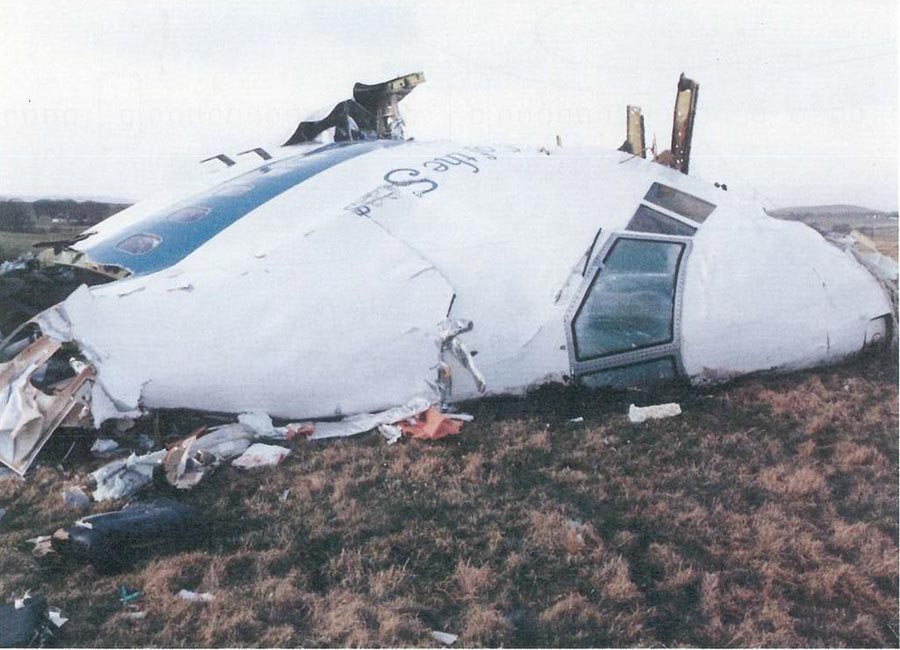
Thewreckage of Pan Am Flight 103. [Photo/wikipedia.org]
Nothing grabs people's attention like an airplane crash. Maybe it's the drama, the destruction or our fascination with flying that brings out the emotions no other type of accident does. While some car crashes, train derailments and sea tragedies do leave us in shock, but the feelings we experience when we see a plan crash are on a totally different scale. Here's a look at 10 deadliest airplane crashes, or at least disasters most likely caused by accident.
Despite the terrifying crashes, planes are by far the safest way to travel. For those with a fear of flying, it is worth noting that eight of these 10 accidents occurred in the '70s and '80s. Deadly incidents reveal shortcomings that are immediately fixed and that in turn make air travel safer.
No.10 Pan Am Flight 103 (the Lockerbie bombing) Year:1988
Fatalities: 270 Survivors: 0
Pan Am Flight 103, a transatlantic flight from Frankfurt to Detroit via London and New York City, was destroyed by a terrorist bomb on Wednesday, December 21, 1988, killing all 243 passengers and 16 crew on board. Large sections of the aircraft crashed into Lockerbie, Scotland, killing 11 more people on the ground.
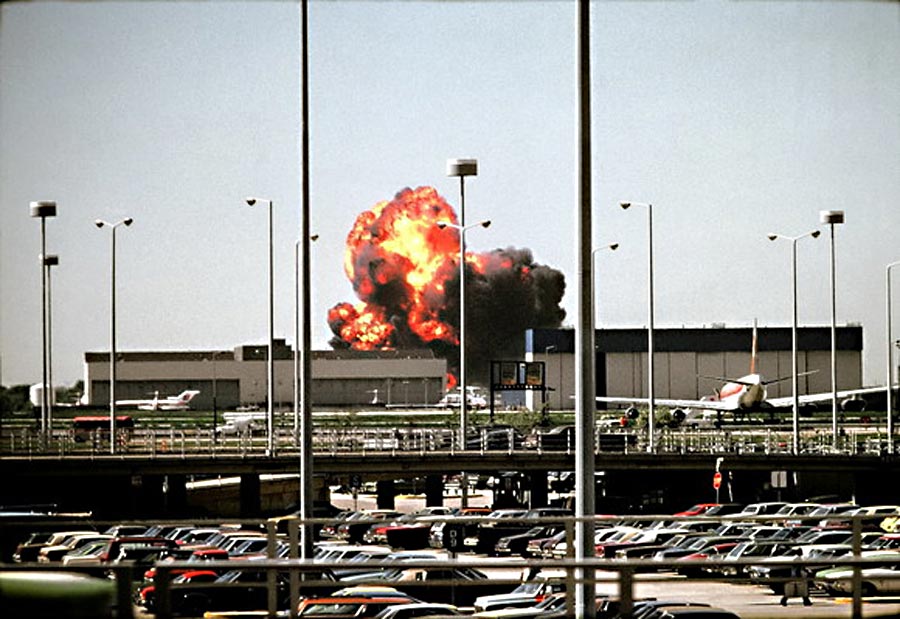
The explosion caused by the crash.[Photo/wikipedia.org]
No.9 American Airlines Flight 191 Year:1979
Fatalities: 273 Survivors: 0
Deadliest airline accident on the US soil occurred when McDonnell Douglas DC-10-10 crashed on May 25, 1979, moments after takeoff from Chicago. All 258 passengers and 13 crew on board were killed, along with two people on the ground. The last maintenance on this particular aircraft, which was carried out eight weeks before the disaster, had damaged the pylons attaching one of the engines to the plane. As the airplane began its takeoff from O'Hare, that engine broke off from the aircraft and fell back onto the runway, taking a large section of the left wing with it, cutting electrical systems, and spilling hydraulic fluid, which controlled some mobile parts of the wing. Debris was thrown into a nearby trailer park, destroying several trailers and cars and an old aircraft hanger, as well as severely injuring several people on the ground and killing two. The crash left the model with a bad safety reputation, despite being generally a safe plane.
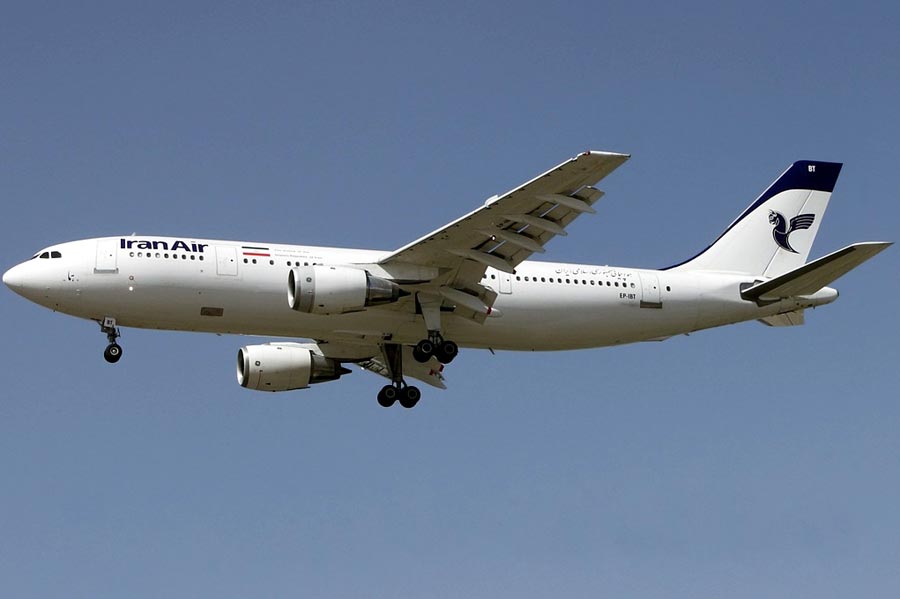
A similar A300B2-200 of Iran Air.[Photo/wikipedia.org]
No.8 Iran Air Flight 655 Year:1988
Fatalities: 290 Survivors: 0
An Iranian Airbus was shot down over the Persian Gulf during the Iran-Iraq war. The accident occurred after a confrontation in international waters between the United States military helicopter USS Vincennes and Iranian gunboats the Vincennes saw what appeared to them to be an Iranian F-14ATomcat fighter flying towards them. There was also confusion with the transponder codes that made it temporarily appear to be broadcasting a military code. The United States has never formally apologized for the accident.
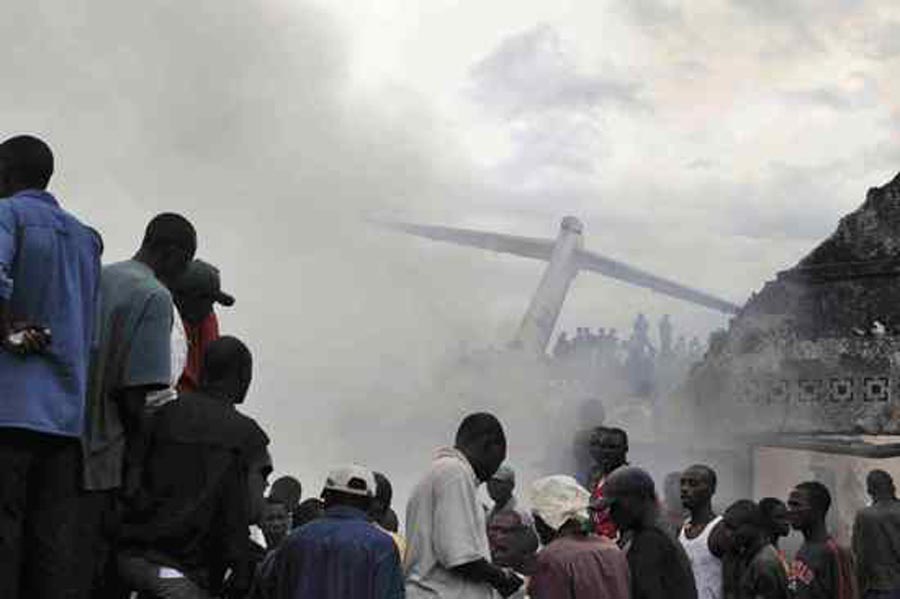
The crash site of Air Africa.[Photo/wikipedia.org]
No.7 Air Africa Crash Year:1996
Fatalities: 2 onboard, 225-348 on the ground. Survivors: Possibly 6 onboard
This is by far the deadliest airplane accident for people on the ground. There is not a lot of information about this crash, probably because of its location and illegality. This cargo aircraft was leased from Russia, but it was being flown without a license. The plane crashed into a nearby marketplace, then exploded in a fireball, killing somewhere between 225 and 348 people, and injuring 500 more.
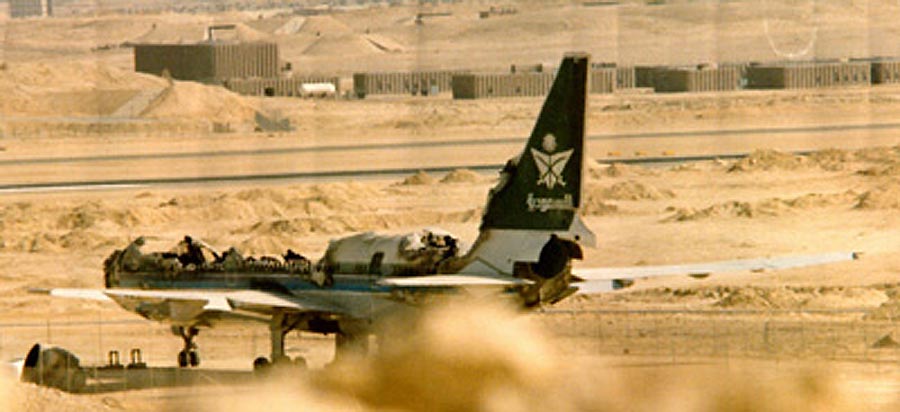
The burnt wreckage of Saudia Flight 163.[Photo/wikipedia.org]
No.6 Saudia Flight 163 Year:1980
Fatalities: 301 Survivors: 0
Six minutes after Saudia 163 flight took off from Riyadh, warnings sounded about smoke in the cargo compartment. The crew spent another four minutes trying to figure out what to do, then finally turned back to the airport. Damage from the fire forced them to shut down their middle engine. The airplane landed safely but not quickly — it continued to roll down the runway, away from the emergency vehicles that had expected them to stop immediately, and then the crew failed to immediately order an evacuation.
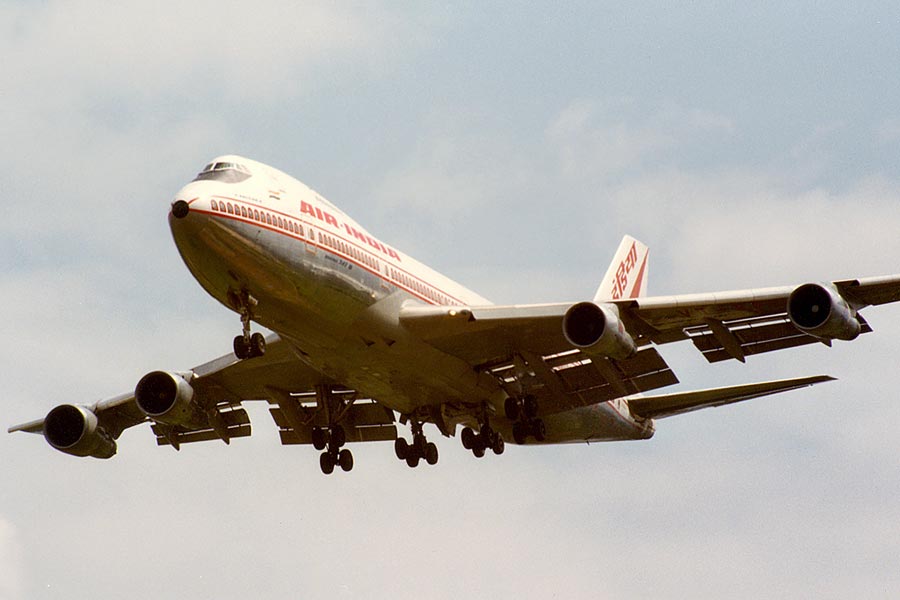
The same model of Boeing 747 237B used by Air India.[Photo/wikipedia.org]
No.5 AirIndiaFlight 182 Year:1985
Fatalities: 329 Survivors: 0
Air India Flight 182 was flying on the Montreal–London–Delhi route. On June 23, 1985, the aircraft operating on the route – Boeing 747-237B - was blown up by a bomb at an altitude of 9,400 m. It crashed into the Atlantic Ocean in Irish airspace. A total of 329 people were killed, including 268 Canadians, 27 British citizens and 24 Indians. The incident was the largest mass murder in Canadian history, and the deadliest aviation disaster to occur over a body of water. It is also the worst disaster in Indian aviation history, and worst aviation disaster in Irish territory.
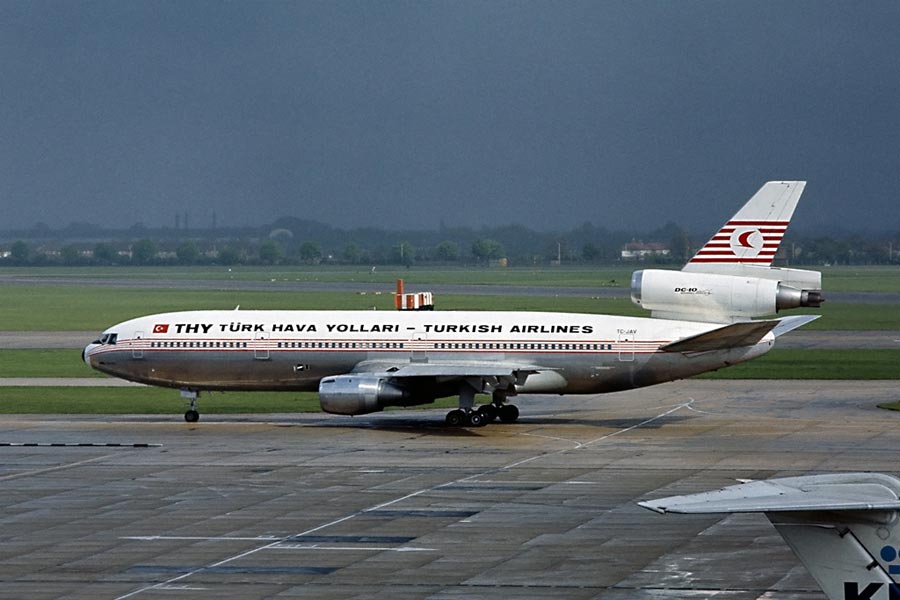
The DC-10 airplane of Turkish airlines.[Photo/wikipedia.org]
No.4 Turkish Airlines Flight 981 Year:1973
Fatalities: 346 Survivors: 0
Flying from Paris to London, the plane had an unusually large number of people onboard for this flight because of a British strike. As they flew over the town of Meaux, France, there was the sound of a muffled explosion and loud rush of air as the cargo hatch blew off. The cabin floor above the cargo hold collapsed, destroying the lines that connected the flight controls to the actual parts they were controlling. The pilots fought for control for 72 seconds before the aircraft crashed into a forest. The airplane disintegrated to such an extent that a bomb was temporarily considered as a possible cause. The cargo hatch that had blown off was found in a field along with part of the cabin floor and six seats still holding their dead passengers. This has been the deadliest crash of a DC-10.
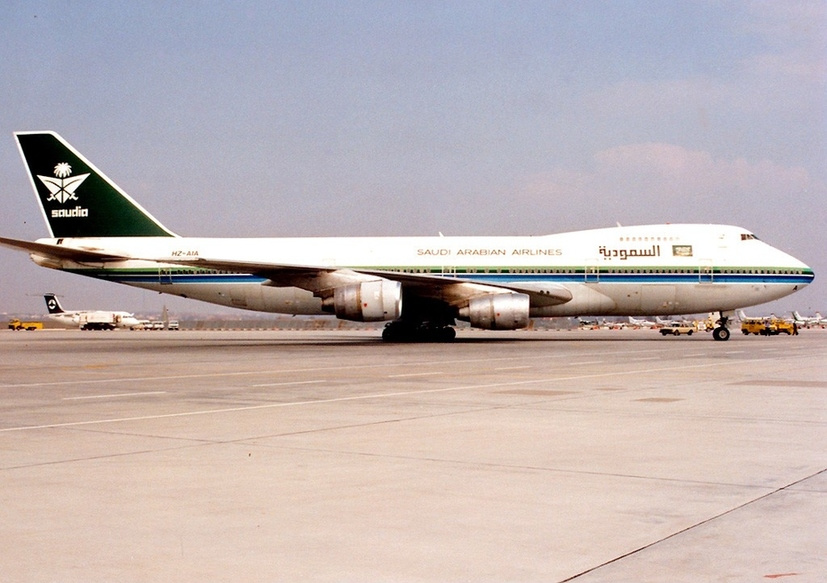
A Boeing 747-100B of Saudi Arabian Airlines.[Photo/wikipedia.org]
No.3 Charkhi Dadri collision Year:1996
Fatalities: 349 Survivors: 0
The Charkhi Dadri mid-air collision occurred on 12 November 1996 over the village of Charkhi Dadri, to the west of New Delhi, India. The aircraft involved were a Saudi Arabian Airlines Boeing 747-100B en route from New Delhi to Dhahran, Saudi Arabia, and a Kazakhstan Airlines Ilyushin Il-76 en route from Shymkent, Kazakhstan, to New Delhi. The crash killed all 349 people on board both planes, making it the world's deadliest mid-air collision, and the third-deadliest aircraft accident in the history of aviation, behind only the Tenerife airport disaster and Japan Airlines Flight 123.
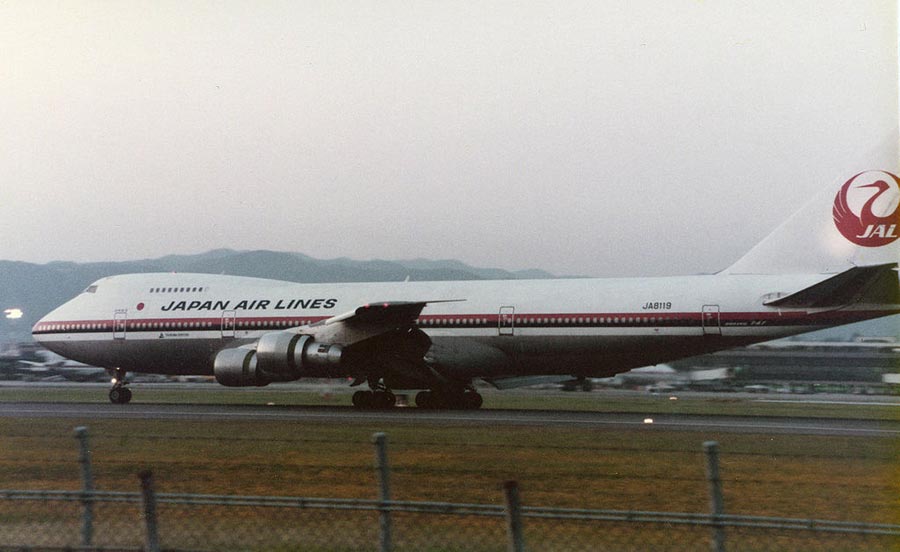
JA8119, the aircraft involved in the accident, at Osaka International Airport in 1984. [Photo/wikipedia.org]
No.2 Japan Airlines Flight 123 Year:1985
Fatalities: 520 Survivors: 4
Japan Airlines Flight 123 was a scheduled domestic Japan Airlines passenger flight from Haneda Airport (Tokyo International Airport) to Osaka International Airport, Japan. On Monday, August 12, 1985, a Boeing 747SR operating this route suffered mechanical failures 12 minutes into the flight and, 32 minutes later, crashed into two ridges of Mount Takamagahara in Ueno, Gunma Prefecture, 100 km (62 miles) from Tokyo. The crash site was on Osutaka Ridge, near Mount Osutaka. All 15 crew members and 505 of the 509 passengers on board died, resulting in a total of 520 deaths and 4 survivors. It is the deadliest single-aircraft accident in history, and the second-deadliest accidental plane crash, behind the Tenerife airport disaster. The fatalities added to August 1985 being commercial aviation's single deadliest month for passengers plus crew, part of the single deadliest year.
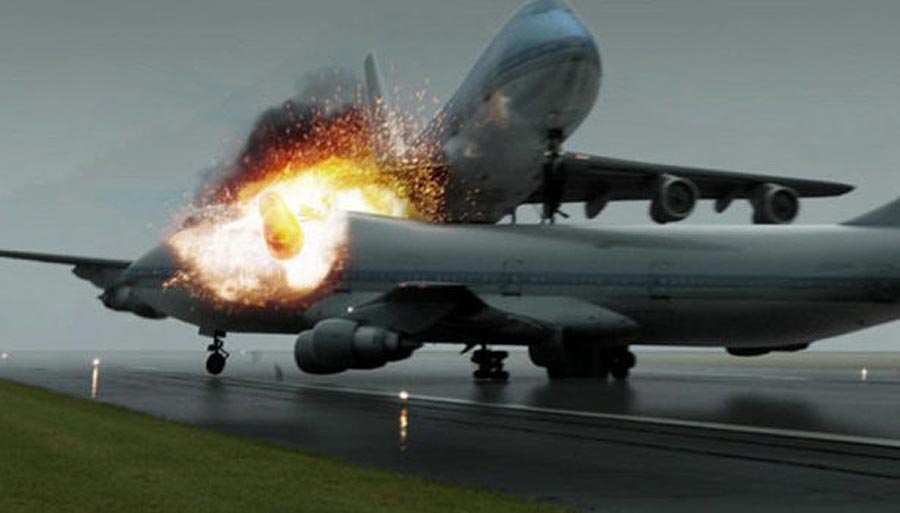
A computer animated recreation of the collision.[Photo/wikipedia.org]
No.1 Tenerife airport disaster Year:1977
Fatalities: 583 Survivors: 61
The deadliest crash, like a perfect storm, was the combination of several rare events and it stands as proof that a great number of things usually have to go wrong before a disaster can occur. After a terrorist bombing at Gran Canaria (Las Palmas) International Airport, five large aircraft and a number of small aircraft that had been scheduled to stop there were diverted to the Los Rodeos Airport on Tenerife. Los Rodeos was a much smaller airport, with one runway with a parallel taxiway and four exits between them. Planes usually taxied up the taxiway, then turned onto the runway and took off. In these extremely cramped conditions however, the parked aircraft took up a significant amount of the taxiway, meaning that a plane had to taxi up the runway and then somehow turn around to take off.
When Gran Canaria reopened, the parked aircraft blocking the taxiway at Tenerife required both of the 747s to taxi on the only runway in order to get in position for takeoff. The fog was so thick that neither aircraft could see the other, nor could the controller in the tower see the runway or the two 747s on it. As the airport did not have ground radar, the only means for the controller to identify the location of each airplane was via voice reports over the radio. As a result of several misunderstandings in the ensuing communication, the KLM flight attempted to take off while the Pan Am flight was still on the runway. The resulting collision destroyed both aircraft, killing all 248 aboard the KLM flight and 335 of 396 aboard the Pan Am flight. Sixty-one people aboard the Pan Am flight, including the pilots and flight engineer, survived the disaster.
No comments:
Post a Comment